Segovia, Spain
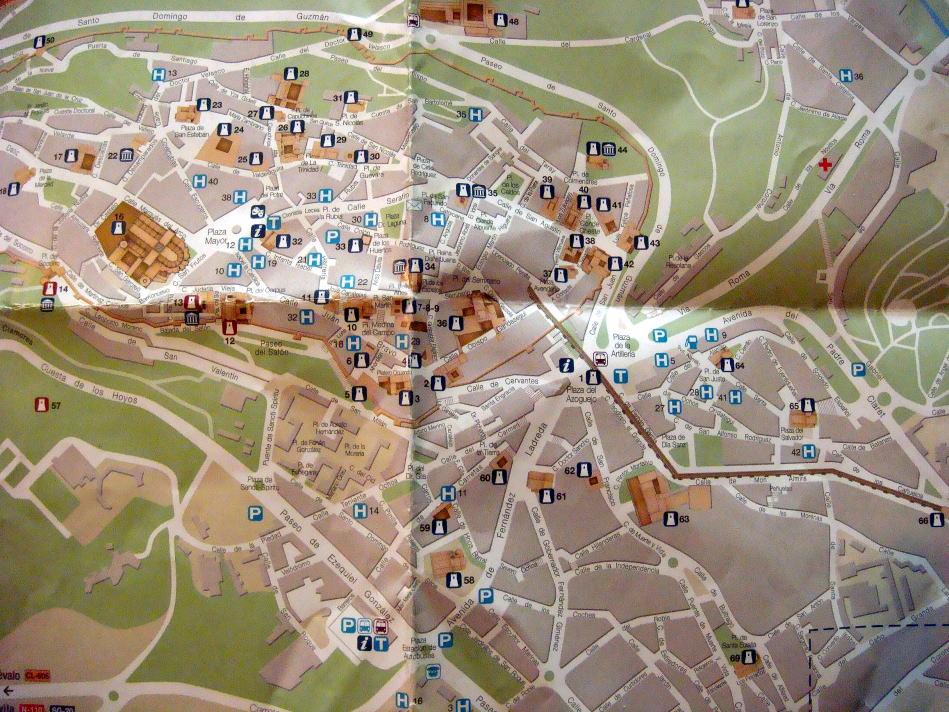
A map of Segovia, Spain
Segovia is the city that is well-known for the Roman's aqueduct bridge
and is situated north of Madrid, 30 minutes
train ride by AVE ( Alta Velocidated Espanola ). The Renfe-120 operates
at speeds up to 250km/h. The maximum
speed of AVE is 350kms/h, and links Madrid and Valladolid via Segovia,
at a travel time of 56 to 70min.
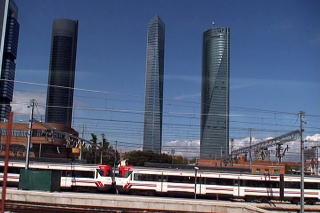 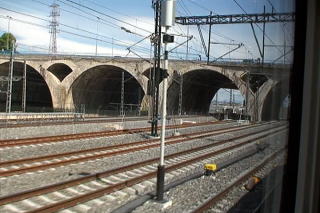 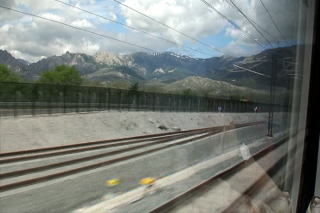
(L) AVE train is now leaving Chamartin railway station of Madrid. The Cuatro
Torres Business Area (CTBA) is behind the train.
(M) Multiple standard-gauge track lines near the Chamartin station.
(R) A high-speed train is approaching the snow-covered Sierra de Guadarrama
mountains, extending from the province of Madrid
to Segovia. The tunnel south to Segovia is 28km-long and the fourth longest
train tunnel in Europe.
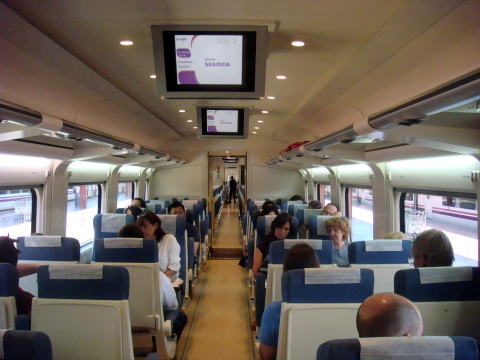 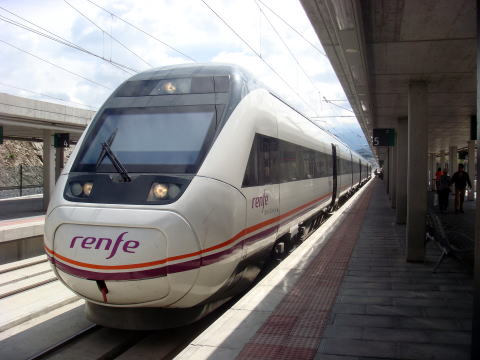
(L) The interior of the AVE train (R) The high-speed train, Renfe 120 arrived
at the Segovia station.
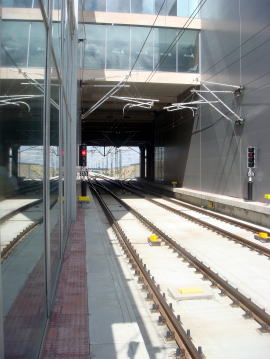 
(L) A new standard-gauge tack line at the AVE Segovia Guiomar station
(R) The photo shows a Renfe reservation ticket from Madrid to Segovia.
A smoking mark on the right corner of
a ticket was cross-marked by the writer. Spain's all trains are smoke-free
since January 2006.
Photographed in May, 2010.
The municipality of Segovia counts some 55,500 inhabitants. The Aqueduct
of Segovia is one of the most significant
and best-preserved monuments left by Romans on the Iberian Peninsula.
The aqueduct transports waters from Fuente Fria river, situated in the
nearby mountains some 17 kms from the city
in a region known as La Acebeda. It runs another 15 kms before arriving in the city. The water is first gathered in
a tank known as 'Big House', and is then led through a channel to a second
tower known as the 'Waterhouse'.
There it is naturally decanted and sand settles out before the water continues
its route. Next the water travels 728
meters on a one-percent grade until it is high upon the Postigo, a rocky outcropping on which the old city center.
At its tallest, the aqueduct reaches a height of 28.5 meters, including
nearly 6 meters of foundation. There are both
single and double arches supported by pillars. On the course of the aqueduct,
it boasts 79 single and 44 double
arches, in total of 167 arches.
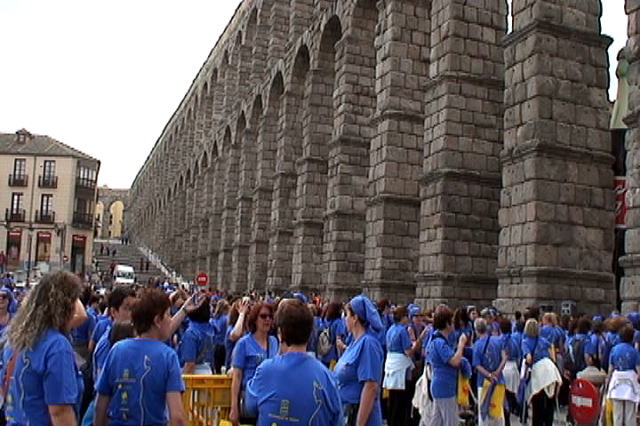 
Segovia in the festival, 2010
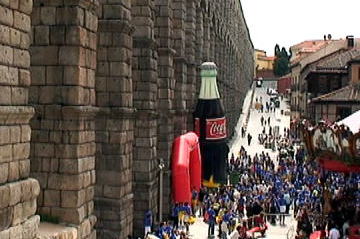 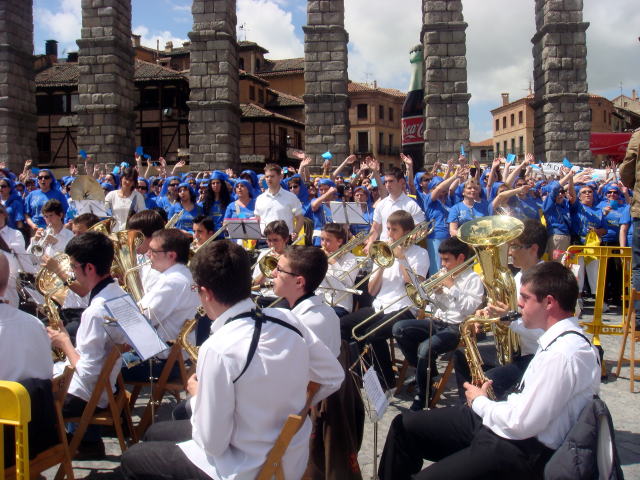
Segovia in the festival, 2010
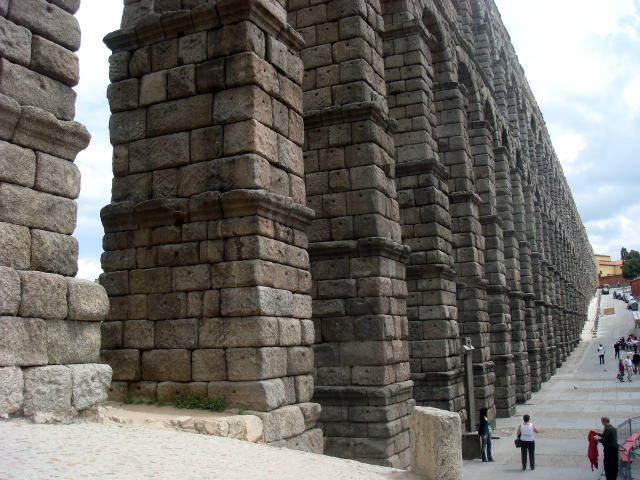 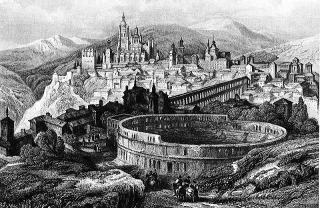
(L) A long-standing Roman Aqueduct observed from the site of Plaza de la
Artilleria, Segovia (R) Segovia in the period of 1840
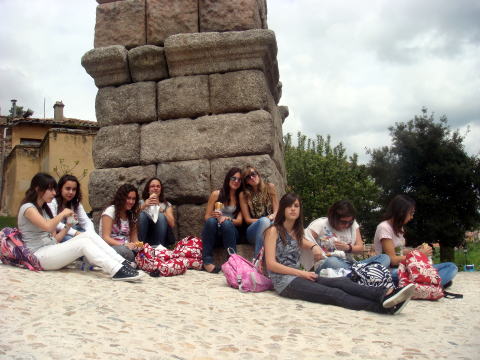 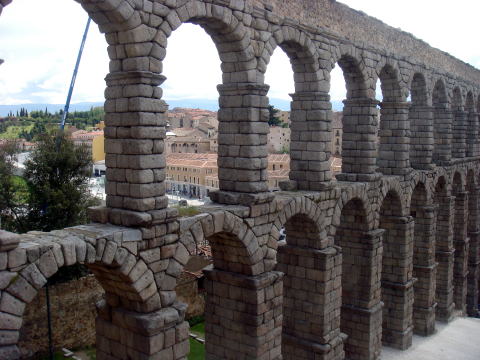
(L) A group of young girls are resting under the 'water bridge'. (R) The
double arches supported by pillars
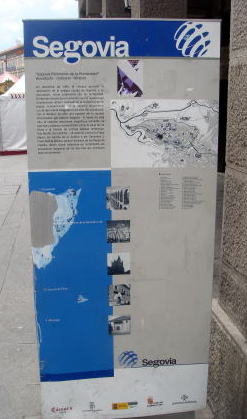 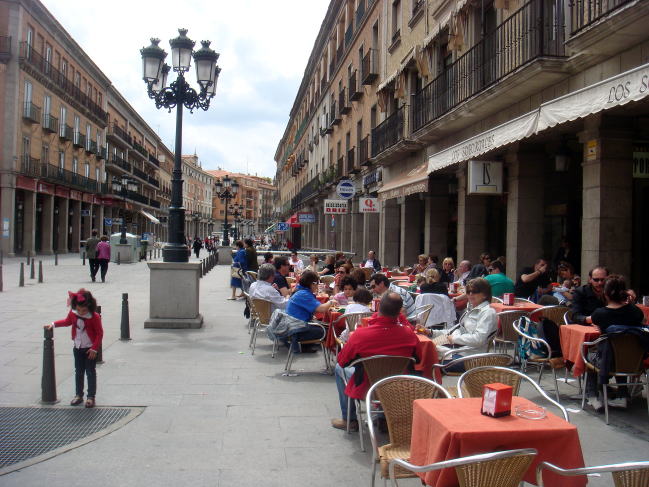
(L) A signboard of Segovia
(R) People are sitting on the outside seat of cafe enjoying a Segovia holiday,
at Anenida de Frenandez Ladreda
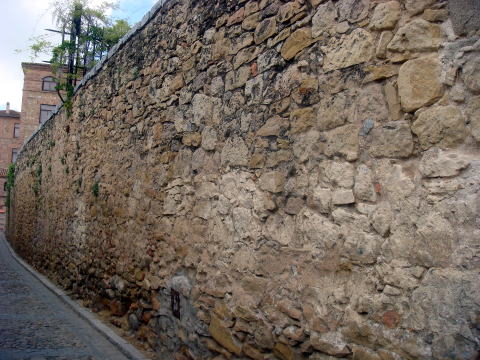 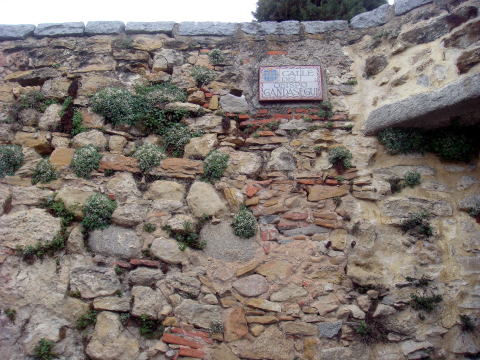
Calle Obispo Gandasegui
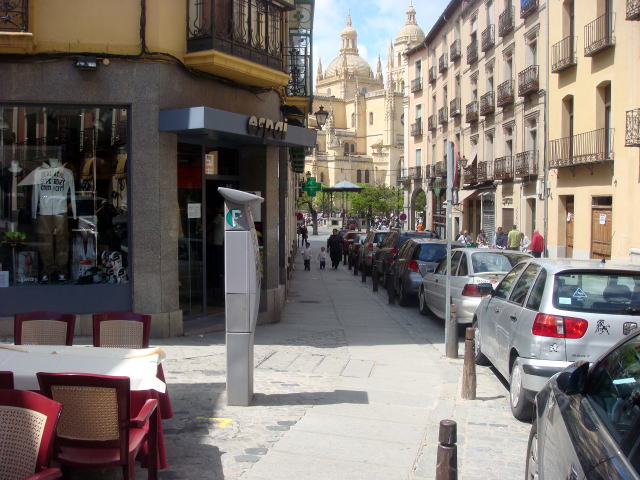 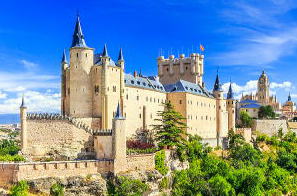
(L)The main street for a day visitor near the cathedral (R) Alcazar de
Segovia (Picture source: Travel Safe)
 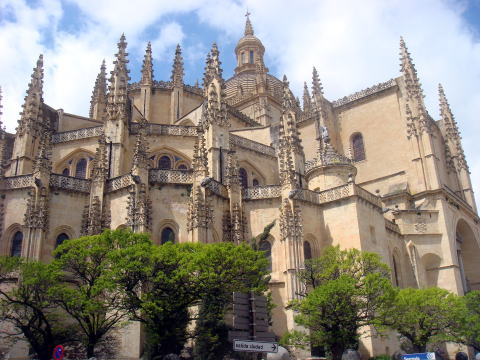
Plaza Mayor and 'Catedral de Segovia'
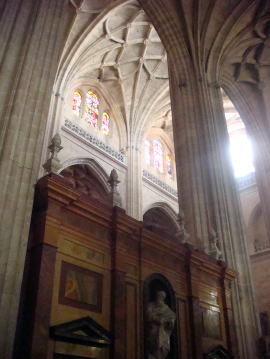 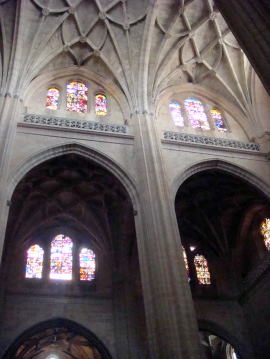 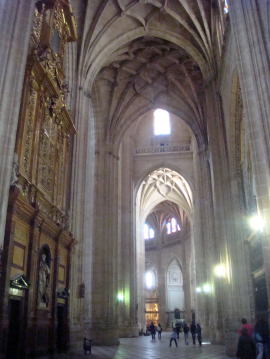
The interior of Catedral de Segovia with a stained glass window
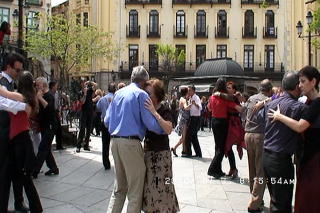 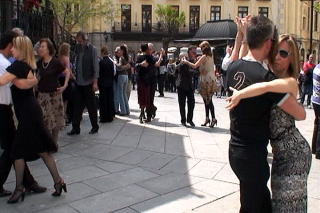 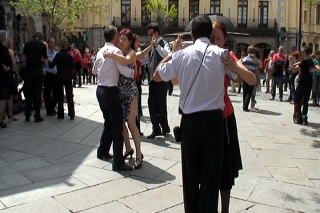
A dancing party was held at the Plaza Mayor. Anyone who wants to dance,
do so.
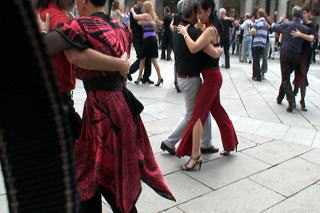 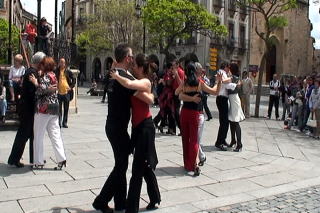 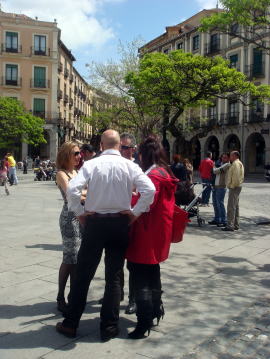
A passionate Spanish dance in play at the Plaza Mayor, Segovia
  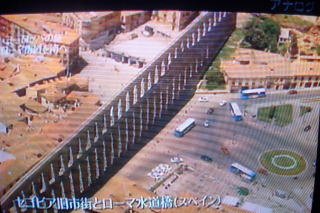
(L) Old town of Segovia (M) Roman Aqueduct in the back (R) Air view of
the Roman Aqueduct
( Source: World Heritage broadcast by TBS TV)
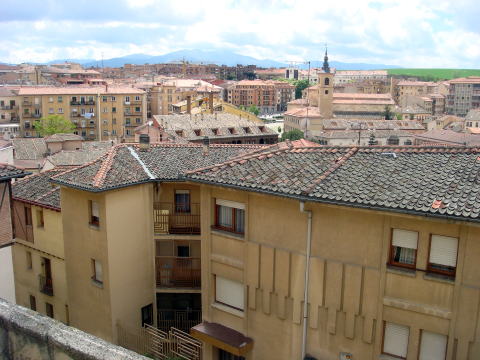 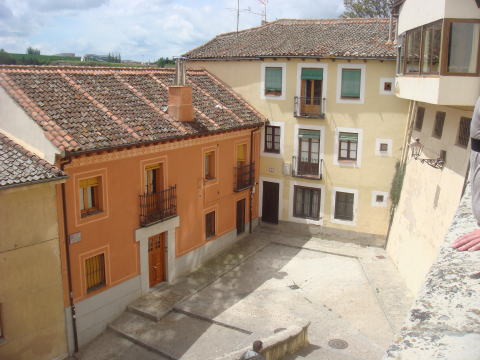
A town house of Segovia
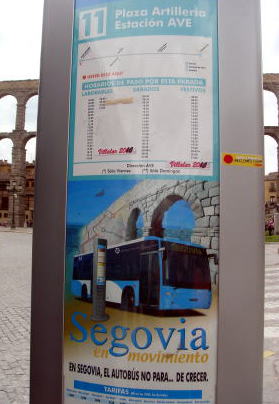  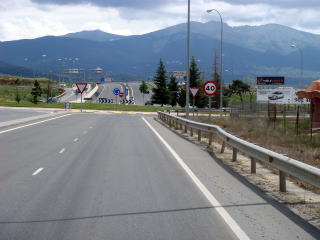
(L) A bus-stop at Plaza de la Artilleria, for the AVE high-speed train
station
(M) It costs 0.88 Euros from the city to the AVE station, at Gaiomar
(R) Scenenary near the AVE station, 5kms far from the city of Segovia
 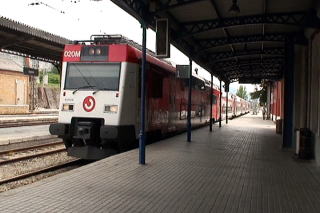 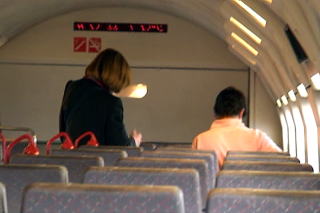
(L) A very quite Secgovia Red Convencional station, 2kms far from the city
(M) A train is arriving at the plateform of Segovia local terminal.
(R) A woman conductor is examining a passenger's ticket.
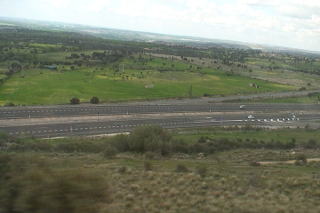 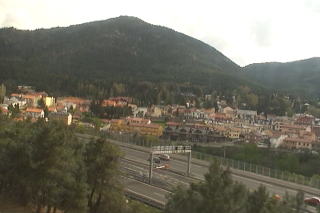 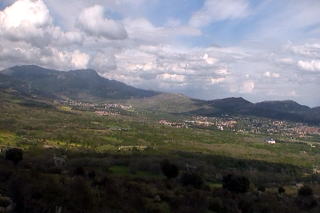
The train comes to a rise in the railway to approach the mountain pass
of Sierra de Guadarrama, along with a highway to Madrid.
 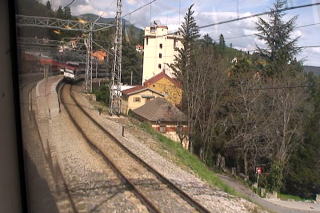 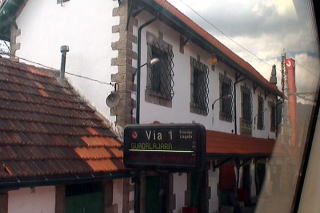
The highland houses, railway and train station
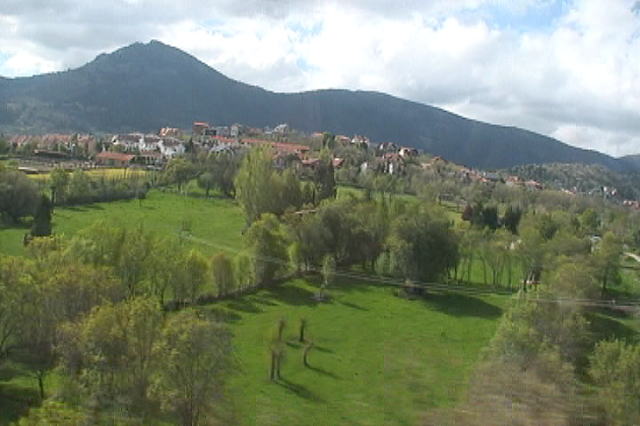 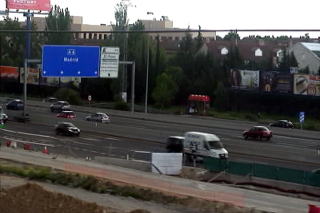
(L) A highland town with rich in greenery (R) A highway sign board showing
the direction to Madrid
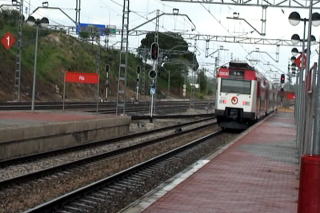 
(L) A Renfe train is leaving from the Pitis station, which is the terminal
of Madrid Metro Line 7, as well.
(R) The four-building at Estacion de Chamartin, Cuatro Torres Business
Area (CTBA) is seen over the woods.
Photographed in May, 2010.
セゴビアは、マドリードから北に87km、従来線鉄道で2時間、新高速鉄道で約30分の位置にある。高速列車はセゴビアの
手前に立ちはだかるグアダラマ山脈を欧州で4番目に長い鉄道トンネルで一気に走り抜ける。極めて短時間にアクセス出来る
ことから最近ではマドリットからの日帰り圏に入っている。AVE(スペイン高速鉄道)の新しい車両は非常に早く快適で
ある。事前に座席指定をとる必要がある。日本のように座席指定なしの自由席はないので、夜遅くまで座席の開くのを待つ
こともある。
一方、セゴビアは在来線の終点となっており、のんびりとした列車の旅を楽しむことが出来る。山越えの途中で豊かな
自然や山間の避暑地を垣間見ることが出来る。
セゴビア旧市街はやや狭い高台の上にあり、眼下にはスペインの田園風景が広がる。大聖堂、古代ローマの石造りの水道橋
が有名であり、古い面影を残す街並みには異国情緒があふれる。水道橋はスペインの水道橋としては最大規模で全長、728
メートルに及ぶ。セゴビア旧市街と水道橋は共にユネスコの世界遺産に登録されている。
 Railway Travel around the World
Railway Travel around the World
All railway trains should be completely smoke -free.
 Smoking ban in the railway trains of the world Smoking ban in the railway trains of the world
鉄道全面禁煙化は世界の常識
 Introduction of Spain: The first Spain's law to restrict smoking enforced
in 2006. Introduction of Spain: The first Spain's law to restrict smoking enforced
in 2006.
 Spain enforced a total smoking ban in indoor public space in 2011. Spain enforced a total smoking ban in indoor public space in 2011.
 Ourense Ourense
Spain 2006-2011
 Madrid tour Madrid tour  Barcelona tour Barcelona tour  Gaudi's masterpiece Gaudi's masterpiece  Barcelona metro and railway Barcelona metro and railway  Segovia Segovia
 High-speed train in Spain High-speed train in Spain  Smoking ban in Spain in 2010 Smoking ban in Spain in 2010
 セゴビア セゴビア
 2010年5月執筆 医学博士 宮本順伯 2010年5月執筆 医学博士 宮本順伯
★This Web site is link-free.
This information was provided by the Smokefree Hotel and Travel.
The photographs were taken and the article was written in May 2010,
by Junhaku Miyamoto, M.D., PhD.
Copyright (C) 2010 Junhaku Miyamoto, All rights reserved.
|